Cu Chi Tunnels’ history instilled fear in French and American soldiers whenever they were mentioned.
The Cu Chi Tunnels history were a remarkable feat of human ingenuity and endurance. This intricate network, spanning over 250 kilometers and crafted entirely by hand – no fancy machines, just sheer grit—was the ultimate nightmare fuel for unsuspecting soldiers from both the French and American forces. Today, the Cu Chi Tunnels are revered as a national historical treasure, drawing millions of visitors eager to explore and pay homage to this proud chapter in the nation’s history of resistance.
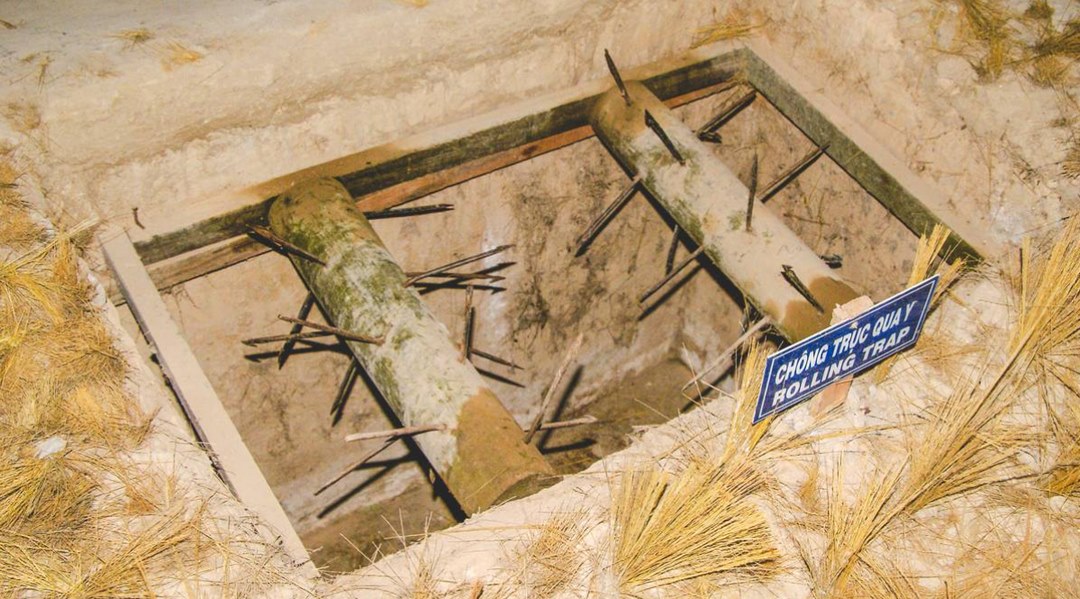
What Are the Cu Chi Tunnels? Discover the Massive Underground Labyrinth Dug by Sheer Human Determination
The Cu Chi Tunnels, situated in Phu Hiep Hamlet, Phu My Hung Commune, Cu Chi District, have emerged as a must-see destination for tourists. Located just 70 kilometers from the heart of Ho Chi Minh City, this remarkable site boasts a vast and intricate tunnel system stretching up to 250 kilometers. The tunnels are ingeniously constructed across three levels, with the deepest reaching a staggering 12 meters below ground.
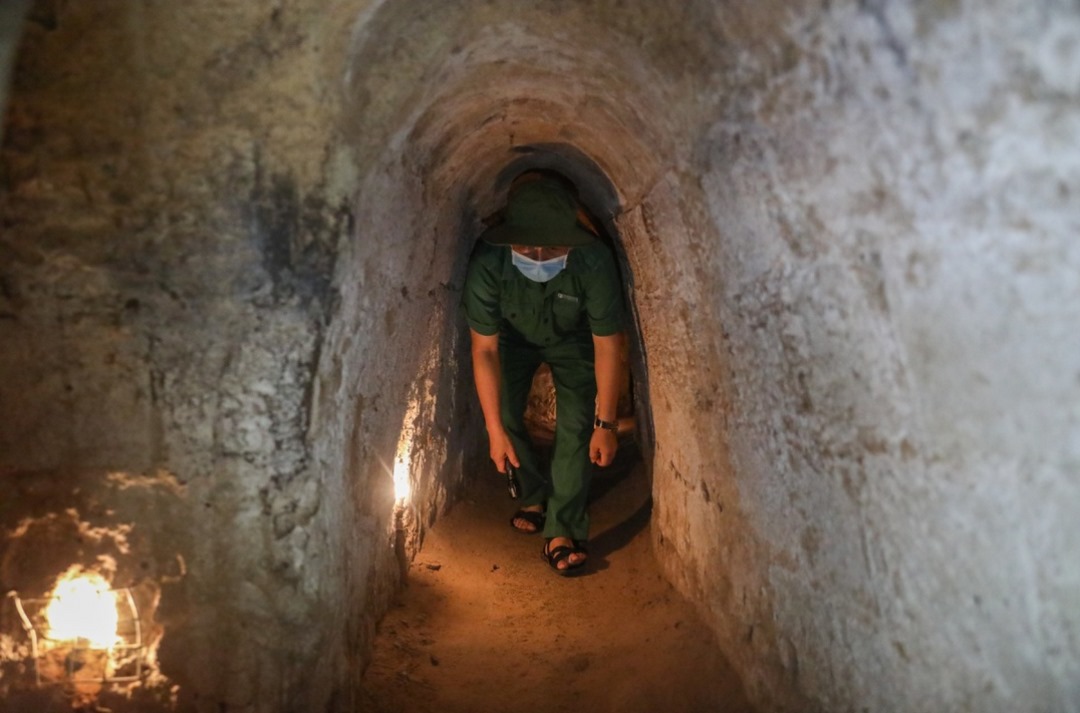
Spanning an impressive 250 kilometers, the Cu Chi Tunnels house an array of strategic structures, including kitchens, wells, offices, living quarters, trenches, food storage, and infirmaries. This complex network served as a formidable stronghold for our army and people, providing the necessary infrastructure to fiercely resist the American invaders. The Cu Chi Tunnels history stands as a testament to the unwavering resolve and ingenuity of the Vietnamese in their fight for freedom.
The Cu Chi Tunnels have earned international acclaim, being recognized as one of the six most impressive man-made structures in the world and listed among the seven most unusual destinations in Southeast Asia. Now designated as a special national historical relic, the tunnels have become a major attraction, drawing in countless domestic and international tourists eager to explore, experience, and gain a deeper understanding of the heroic history of the Vietnamese army and people.

History of Cu Chi Tunnels: From Construction to Historical Relics
The Cu Chi Tunnels history traces back to the resistance war against the French (1946-1948), with significant contributions from the army and the people of Tan Phu Trung and Phuoc Vinh An communes. Initially, short tunnels were dug to provide shelter, store weapons and documents, and facilitate communication for the resistance forces. As the need to connect villages grew, these individual tunnels were gradually linked together, forming a complete and complex underground network.
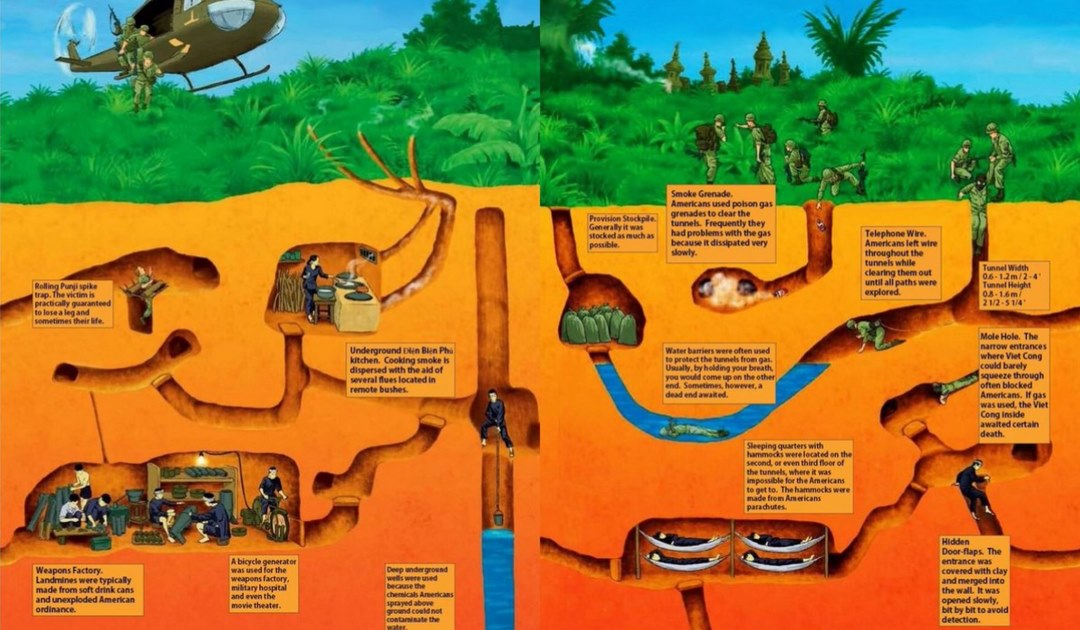
The tunnel system was constructed with three deep levels, with the lowest floor reaching 12 meters below ground. Within these depths, functional rooms such as meeting halls, the Hoang Cam, named after its inventor, Hoàng Cầm, a chef and Viet Minh soldier in 1951, was a stove intake and chimney system that diffused and dissipated smoke from cooking which prevented aerial detection of smoke by American military planes. You can also find a first-aid station, a sleeping quarter, an armory, and numerous secret escape routes strategically arranged to support the long-term war effort. The history of the Cu Chi Tunnels stands as a testament not only to this remarkable man-made structure but also to the perseverance and ingenuity of the people throughout the resistance war.
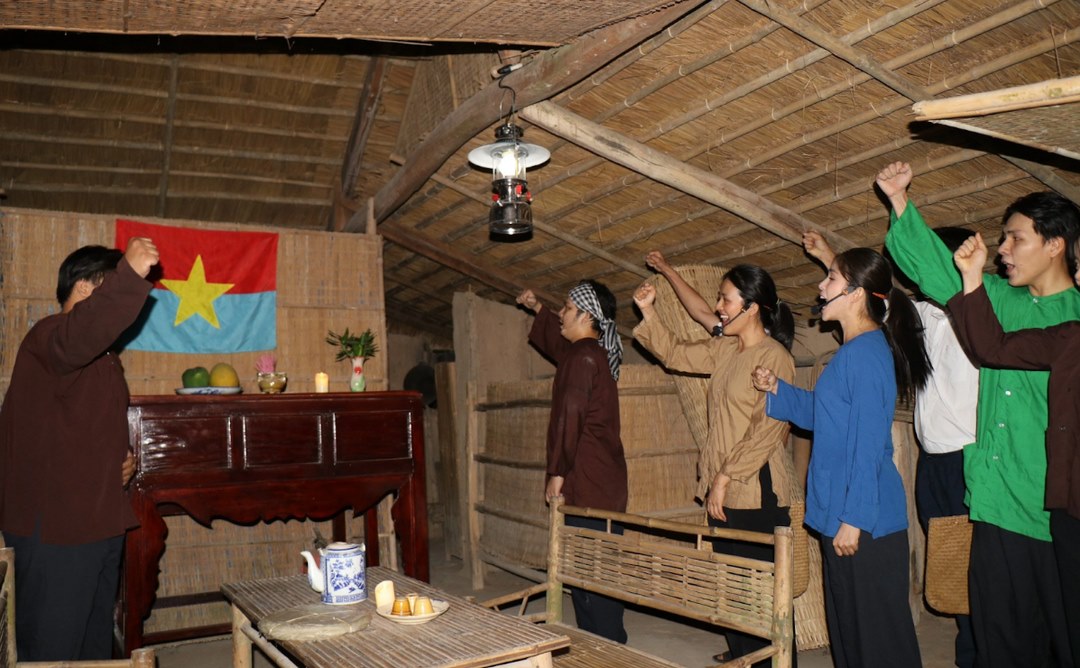
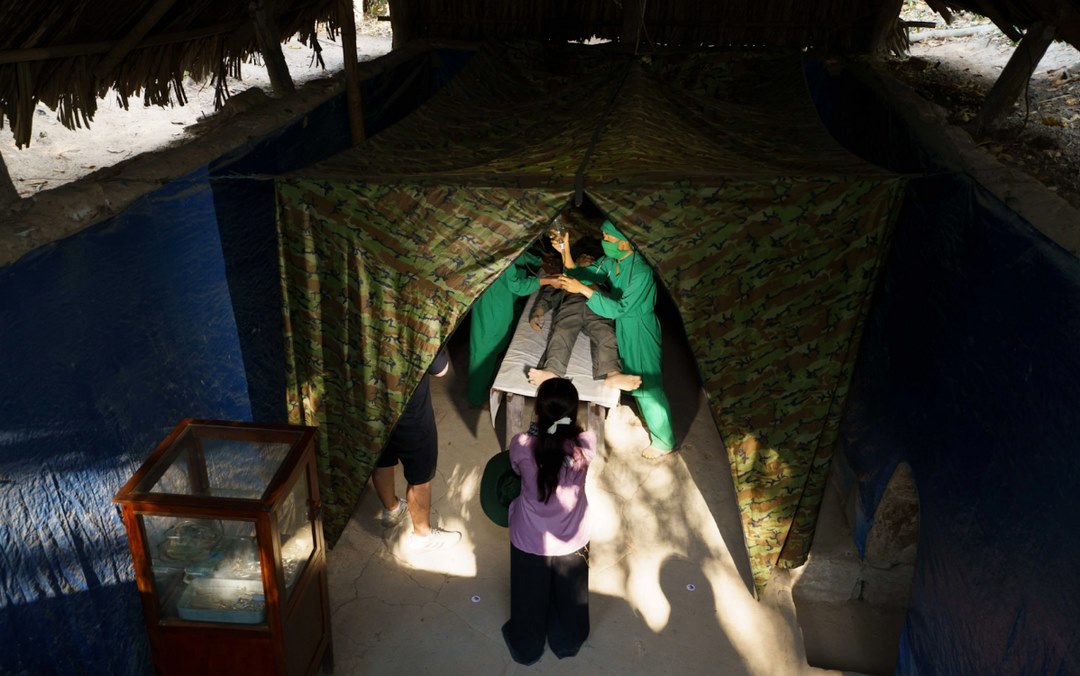
Today, Cu Chi Tunnels has been recognized as a special national historical site, attracting tourists from all over the world to visit and learn about the glorious history of the Vietnamese people. Preserved after 1975, this relic has become a historical tourist destination where visitors can explore the unique architecture and experience firsthand the challenging lives of soldiers and civilians during the war years.
According to the Cu Chi Tunnels Historical Site Management Board, the site now draws approximately 1.5 million tourists annually, including international visitors and high-ranking delegations. Visitors to the tunnels will have the opportunity to marvel at the extensive and robust tunnel system, a testament to human perseverance and ingenuity, which has stood firm for over 75 years.
The Lethal Traps of the Cu Chi Tunnels During the Vietnam War
The Cu Chi tunnel system was not only a great engineering feat but also part of a clever military strategy. The guerrillas, with meticulous planning, designed the tunnel system with careful consideration to enable surprise attacks from multiple directions while effectively preventing enemy advances. This intricate network was divided into numerous branches, complete with dead ends and sealed doors to confuse and block the enemy, all while allowing for swift movement and concealment. Secret vents and cleverly disguised ventilation holes not only provided much-needed airflow – but also served as unexpected firing points, further enhancing the guerrillas’ tactical advantage.
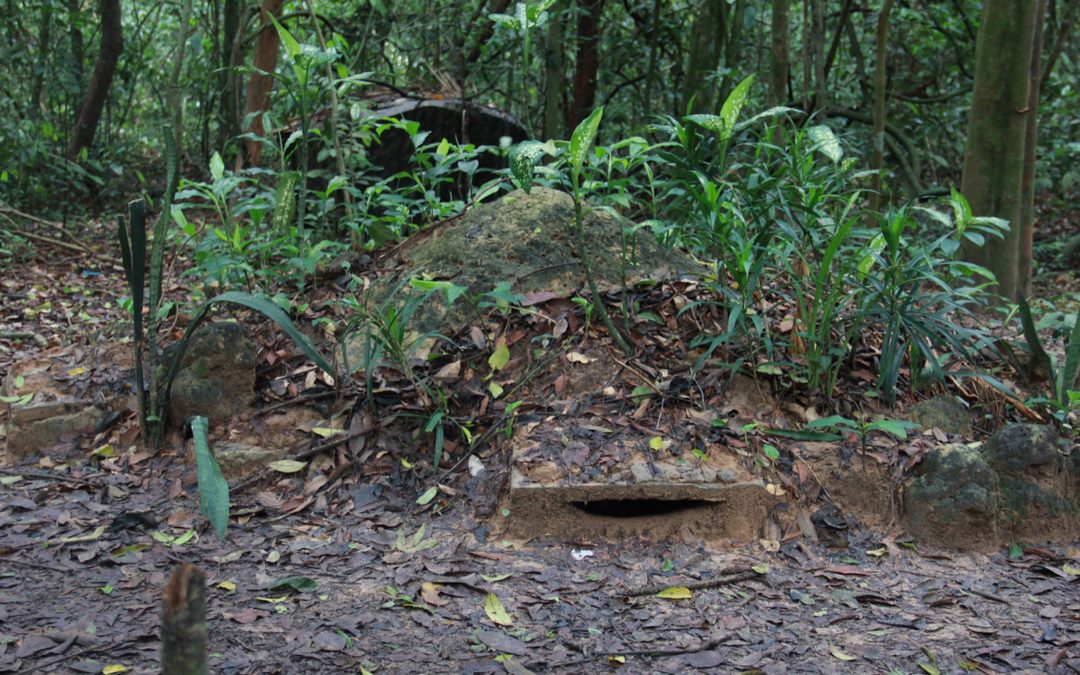
According to the Cu Chi Tunnels history, this place was equipped with many sophisticated traps and primitive weapons, causing significant challenges for the American army. Traps like spike pits, sharp stakes, and various concealed spikes were strategically placed, ensuring that the enemy was constantly at risk of injury. These traps were not only deadly but also instilled a deep sense of fear in those who encountered them. Homemade weapons, including spears, duckbill grenades, and hanging spike traps, further heightened the American army’s caution when approaching the tunnels. Additionally, strategies involving anti-tank mines, anti-personnel mines, and other traps were employed to protect the tunnels and inflict serious damage on unsuspecting enemies.
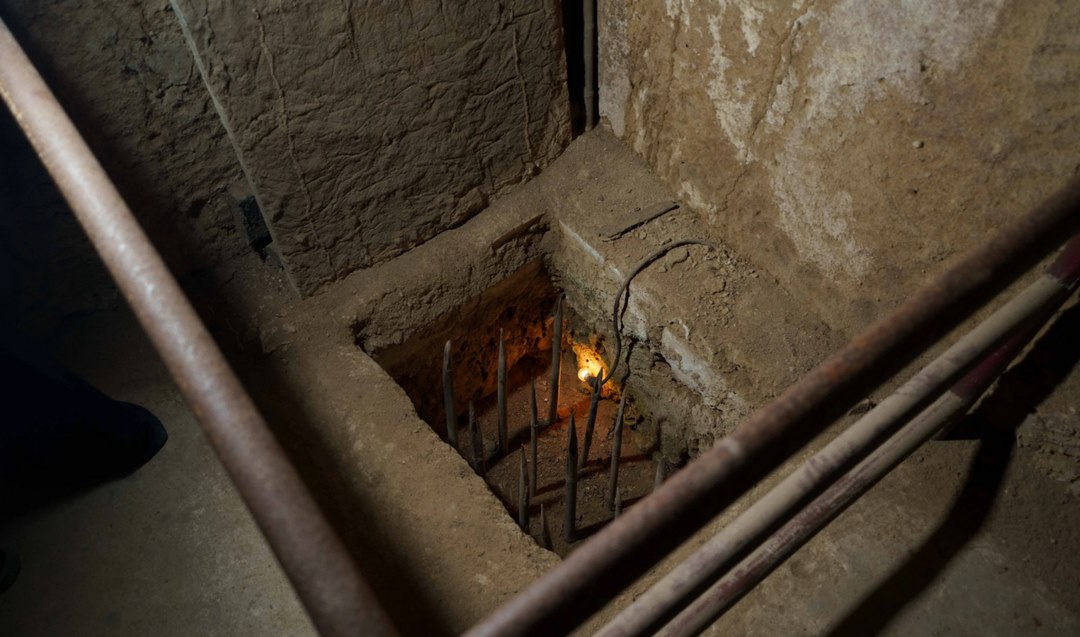
Despite enduring relentless B-52 bombings and intense artillery fire, the Cu Chi Tunnels stood as a testament to the resilience and perseverance of the army and people of Cu Chi. Not only did the tunnels remain intact, but they stood firm and continued to be a deadly trap for the US army, playing an important role in the resistance strategy, playing a crucial role in the resistance strategy. The Cu Chi Tunnels history not only documents the significant damage inflicted on the enemy but also reflects the courage and determination of the Vietnamese people in their fight against foreign invaders. Today, the Cu Chi Tunnels are a popular tourist destination, serving as a living witness to a heroic and challenging period in history.
Conclusion
The Cu Chi Tunnels history not only marks glorious victories but also demonstrates the persistent fighting spirit and deep patriotism of the Vietnamese people. These tunnels are more than just remnants of past battles; they are a living testament to the nation’s resilience, creativity, and unyielding determination. Today, the Cu Chi Tunnels remain a powerful reminder of Vietnam’s glorious victories, and they serve as a must-visit historical site for both Vietnamese and international tourists seeking to understand the epic resistance that shaped a nation.

